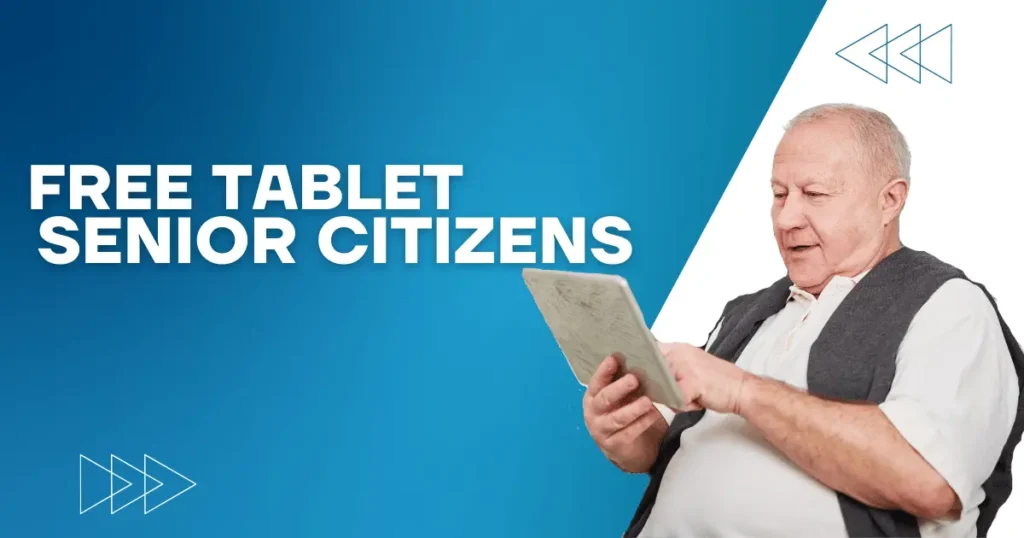As technology becomes a cornerstone of daily life, senior citizens face unique challenges in staying connected, accessing healthcare, and enjoying entertainment. Tablets, with their portability and user-friendly interfaces, are an ideal solution—yet their cost can be a barrier for those on fixed incomes.
Fortunately, in 2025, numerous programs and initiatives offer free tablets for senior citizens, empowering older adults to bridge the digital divide. This comprehensive guide explores how seniors can access these devices, eligibility requirements, and the benefits of embracing technology.
Why Tablets Matter for Seniors
Tablets aren’t just gadgets; they’re gateways to independence. They enable video calls with family, telehealth appointments, e-books, and brain-boosting games, all of which enhance the quality of life.
A 2023 AARP study found that 70% of seniors using technology reported improved social connections, while telehealth usage among older adults surged by 40% since 2020. However, affordability remains a hurdle, with many tablets priced between $100 and $500. That’s where free tablet programs come in, ensuring seniors aren’t left behind in an increasingly digital world.

Government Programs Offering Free Tablet to Senior Citizens
The U.S. government has launched various initiatives that provide free or discounted tablets to eligible seniors.
1. The Lifeline Program
The Lifeline Program, administered by the Federal Communications Commission (FCC), offers subsidized phone and internet services to low-income households. Some participating providers—like Assurance Wireless, Safelink Wireless, and Q Link Wireless—bundle free or low-cost tablets with their plans.
Why It’s Beneficial for Seniors
Lifeline ensures seniors can stay connected even if they lack the financial means to pay for a tablet or data plan. The tablets provided typically come with preloaded accessibility features, making them easier to use for individuals with vision or hearing impairments. Many seniors use Lifeline tablets for emergency communication, online banking, and virtual doctor visits.
✅ Eligibility:
- Income at or below 135% of the Federal Poverty Guidelines (e.g., $20,331/year for a single-person household in 2025).
- Enrollment in Medicaid, SNAP, or Supplemental Security Income (SSI).
🔗 How to Apply: Visit Lifeline Support, find a provider in your state, and submit proof of eligibility.
2. Post-ACP Opportunities
The Affordable Connectivity Program (ACP) ended in June 2024, but many ISPs like Spectrum and Verizon still offer free tablets through private initiatives.
Why It’s Beneficial for Seniors
Even though the ACP program has ended, many internet service providers have continued offering low-cost connectivity plans and discounted devices for seniors. Seniors who previously benefited from ACP should check with their current provider, as many companies are transitioning customers to alternative assistance programs.
✅ Eligibility: Varies by provider but often aligns with Lifeline criteria.
🔗 How to Apply: Check Free Government Tablet for the latest ISP promotions.
3. Local Government Initiatives
Cities like New York and Chicago started distributing free tablets during COVID-19, and in 2025, similar programs will persist.
Why It’s Beneficial for Seniors
Local governments often provide refurbished tablets to low-income seniors, which can be useful for those unfamiliar with modern devices. Some programs even offer free digital literacy classes, ensuring that seniors can effectively use their new devices.
✅ Eligibility:
- Typically 65+ with income restrictions.
- Some programs prioritize veterans or disabled seniors.
🔗 How to Apply: Contact your local Area Agency on Aging (find yours at Eldercare Locator).
Nonprofit Organizations Bridging the Gap
Several nonprofits refurbish donated devices and distribute them to seniors.
1. Computers With Causes
A national charity that provides free tablets and laptops to seniors in need.
Computers With Causes works by accepting donated electronics, refurbishing them, and redistributing them to low-income individuals, including seniors. The organization prioritizes veterans, disabled seniors, and caregivers, recognizing the impact that technology has on their lives. Their program ensures that tablets come with basic software and essential apps pre-installed, such as video calling apps, health-tracking tools, and web browsers.
🔗 How to Apply: Visit Computers With Causes and complete an application.
2. PCs for People
Focused on digital equity, this group offers free or low-cost tablets.
PCs for People has been a leader in bridging the digital divide by offering affordable devices and internet services to low-income individuals. They work with local community organizations to distribute tablets to seniors who meet their income eligibility requirements. They also provide low-cost internet service, which is crucial for seniors who may not already have Wi-Fi access at home.
🔗 How to Apply: Check PCs for People for eligibility and application details.
3. OATS and AARP Partnerships
Older Adults Technology Services (OATS), backed by AARP, provides tech training and free tablets through sponsors like AT&T and T-Mobile.
OATS focuses not just on providing seniors with tablets but also on educating them on digital literacy. Their programs help seniors learn how to navigate the internet safely, avoid scams, and make the most of their new devices. In some cases, seniors who complete OATS training programs may receive a free tablet as an incentive.
🔗 How to Apply: Visit OATS or call your local AARP chapter.
Eligibility Requirements: What Seniors Need to Know
Most programs require:
- Age: 60–65+ (varies).
- Income: Low-income status, often tied to federal poverty guidelines.
- Documentation: Proof of age, income, or public assistance enrollment.
🔗 Check Additional Eligibility Details:
How to Apply for a free tablet for senior citizens: Step-by-Step Guide
- Research Options: Start with Lifeline, nonprofits, and local programs.
- Gather Documents: Prepare proof of eligibility (Medicaid card, SSI letter, etc.).
- Contact Providers: Confirm tablet availability before applying.
- Submit Applications: Follow each program’s instructions carefully.
- Follow Up: If approved, expect delivery in 2–8 weeks.
Conclusion: Empowerment Through Technology
Free tablets for senior citizens aren’t just handouts—they’re tools for connection, health, and learning. Whether through government programs like Lifeline, nonprofits like PCs for People, or local efforts, seniors have more options than ever to stay digitally connected.
Start today by exploring local resources, checking eligibility for Medicaid-linked programs, and applying for a free tablet to embrace technology for a better quality of life.
